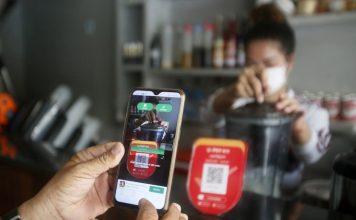
by Adolfo Perez-Gascon
“If countries here adopt clean energy, and they do it the right way, there’s hope for the world,” says Ken Bradley, a US national who spent decades promoting green energy technologies in his home country through advocacy work and business counseling, before leaving for Cambodia last year.
Asia is “ground zero for climate change”, according to Bradley, with the Kingdom affording an opportunity too good to ignore. “Cambodia has 5.8 peak sunlight hours a day, one of the best solar resources in the entire region, probably one of the best in the entire world. You mix that with high electricity rates, and this is a very good market,” he says.
Bradley now works with Kamworks, a pioneering company in Cambodia’s nascent solar energy sector. As the director of business development, he hopes to change the way everyday Cambodians and the government are looking at energy.
“My job here is to make products that will make that happen, products that work for people. My job is to make the technology attractive.”
Vast, unmet potential
Bradley’s professional ambition – to make solar generated electricity attractive in the Kingdom – may seem to some like an awful lot of work. To gauge just how hard it would be to achieve, we need to leave all other considerations aside, and focus solely on the money. After all, as Bradley so bluntly puts it: “People are going to adopt solar if it makes economic sense. Period.”
According to a recent report by the Mekong Strategic Partners (MSP) titled Switching On: Cambodia’s Path to Sustainable Energy Security, the costs associated with solar power are falling rapidly, so much so that Cambodia can now, according to the study, cost-effectively strengthen its energy security by accelerating investment in solar and biomass technologies.
Large hydropower dams and coal-fired plants – currently Cambodia’s main energy sources – provide power for between eight and 11 cents per kilowatt-hour (kWh). According to the MSP report, solar installations above one megawatt can now provide electricity profitably for as low as 12 cents/kWh, which makes it “the most competitively priced alternative renewable energy technology”.
And it is only going to get better. Worldwide, costs are expected to continue falling in coming years. Increasing economies of scale, more efficient designs, and constant advances in materials and manufacturing guarantee that the price of solar generated electricity continues on a downward trend.
A country with one of the best solar resources in the region – and possibly the world – and a technology that is quickly becoming more affordable: put two and two together, and it doesn’t take a genius to realise that solar’s potential in Cambodia is vast.
Arguably, it is not being met. To date, the bulk of solar panels installed in the Kingdom belong to small solar home systems (SHS) built on households in the countryside. Only a handful of larger solar energy ventures have been undertaken or are planned, all of them having been announced within the last two years.
The new Coca-Cola plant in the Phnom Penh Special Economic Zone, for example, boasts a photovoltaic (PV) system in the rooftop that will eventually supply a third of the factory’s electrical energy needs.
Last month, Kamworks announced it will install 10,000 solar panels in Khmer Beverages’ beer factory, an ambitious project that will feed the plant with approximately four megawatts of power. The same company recently concluded a PV power system on the rooftop of BKK1’s Silvertown Metropolitan which has been hailed as the first commercial solar power system on a high-end residential tower in Cambodia.

With a handful of notable solar power installations in the last two years, the sector seems to be picking up speed quickly. However, the number of large solar energy projects in Phnom Penh and the rest of the country is still surprisingly small. Which begs the question: what’s keeping investors away from cashing in on what seems like a very profitable market?
Barriers to a fledgling market
Bradley says one of the main hurdles keeping investors away is the lack of clarity in the regulatory environment.
“As with every sector, the government has its role in establishing the ground rules and how it works, and I don’t think those ground rules have been established,” he says. “If the government created more ground rules it will make it easier for private investment to come in.”
Cyril Monteiller, general secretary of Solar Energy Association of Cambodia (SEAC) and co-founder of energy consultancy Sevea, notes that, officially, if you have a solar installation, you cannot be connected to the grid. “Electricité Du Cambodge (EdC) thinks that having too many small solar power systems connected to the grid could be troublesome for the stability of the grid. Therefore they believe they should really regulate the synchronising of those systems with the grid,” he says. EdC is state-run, and the sole electric utility in Cambodia.

Selling excess energy to the national grid
An important step in clarifying the muddled legal framework would be establishing a feed-in tariff or net metering system, which credits those who add electricity to the grid from their solar panels. Save for a few individual net metering agreements – like the Don Bosco solar-equipped school in Sihanoukville – the EdC has failed to recognise the value of distributed electricity provided to the grid, a big deterrent for potential investors.
Monteiller believes we won’t be seeing such a system in Cambodia anytime soon, however. In particular, he thinks the possibility of the EdC taking a serious look at a feed-in tariff is so remote, it is barely worth discussing at the moment. A net metering system, on the other hand, is not such a distant possibility.
“We can think about a net metering regulation, but it will take time. That’s why the first step is to focus on actually being able to officially have both a grid connection and solar installations simultaneously. When we do that, we can start lobbying and talking about net metering,” the energy consultant says.

Limited access to financing
A shift of global proportions is underway. The MPR report states that utilities, consumers and investors in developed and developing countries are switching to renewable energy to constrain environmental impacts but also because it is increasingly economic in its own right. “Hydro and coal are last century technologies,” says Bradley, “Developed economies are moving towards more sustainable alternatives because they are more cost-effective.”
Factor in the energy goals of the Cambodian government – which include achieving electricity self-sufficiency by the year 2024 – and the falling costs of installing solar energy systems, and it becomes clear the KIngdom’s business model for solar at the multi-megawatt scale is now particularly strong.
However, banks have so far failed to seize opportunities in the sector. “Banks right now don’t know about solar and are not interested in providing loans,” says Monteiller.
Although there is considerable interest within international finance circles in “bankable” renewable energy projects in Cambodia, the lack of a clear policy and regulatory framework is inhibiting players like the United Nation’s Green Climate Fund and the Asian Infrastructure Investment Bank from taking chances in the Kingdom’s solar market, according to the MPR report.
Bradley is more positive about the financing options available and says that banks are now beginning to warm up to the idea of investing in the sector, noting that ANZ Bank actually has a very large regional fund dedicated to solar electricity projects.

Unfair taxation?
Inadequate taxation may also be a part of the equation. Solar panels and other components of PV power systems are still subject to VAT. Given that some sustainable biomass energy products – such as sustainable charcoal briquettes – have recently been exempted from paying VAT, many consider this tax shouldn’t be levied on solar energy products. Moreover, since electricity purchases from the EdC are VAT-exempt, solar energy companies cannot pass VAT costs to the end-consumer.
“VAT has a big impact on project prices. Eliminating the tax will provide significant room to make projects more profitable,” says Bradley. According to him, equipment for certain projects can currently qualify for VAT exemption, but the process is very bureaucratic and slow.
Sustainable energy equipment generally does not attract import duties, however, a seven percent duty still applies for solar energy equipment. To make matters worse, certain components needed to build the systems, such as batteries, are subject to a 35 percent import duty. For SEAC’s Monteiller, the first step will be to lower import duties to seven percent for all components needed to build PV systems.

Fighting low quality
Acquiring your very own solar panel in Cambodia isn’t hard. Go to any of the many local markets around the country and you’ll have plenty of opportunity to purchase a PV panel, some retailing for as low as $5. However, if you expect your system to function beyond the initial month, you might want to look elsewhere.
“We are constantly fighting against bad quality products that people buy at their local market,” says Monteiller. “These products break easily. They rarely last longer than a month and are giving a bad name to solar energy among locals. It is important to raise awareness about these lower quality products.”
A new program run by French development agency AFD and funded by the European Union, with Dutch not-for-profit organization SNV as project coordinators, aims to tackle just that.
Among the program’s different awareness-raising activities, Monteiller has great faith in a new off-grid solar product certification standard called the “Good Solar Label”. Only panel providers that meet a certain standard of quality and offer after sales service – including at least two years of warranty – are able to display the label on their products. Six companies have been certified so far: Kamworks, Lighting Engineering & Solutions, BNP Power Green, CamSolar, NRG Solutions and Pteah Baitong.
“Having a quality certification like this helps Cambodians discriminate between high and low quality products, and will help solidify the reputation of solar as a durable and reliable energy source,” Monteiller says.
The case for solar
With a confusing legal and regulatory framework, lack of access to finance, a less-than-ideal taxation environment and an overabundance of bad quality products that give a bad rep to solar power, the hurdles are manifold. Fortunately, so are the opportunities and the arguments for the uptake of solar.
The MPR report found that Cambodia could add 1,000 GWh (gigawatt-hour) to its generating output by constructing 700 megawatts of utility-scale solar on 1,400 hectares of land. With this additional power, Cambodia would achieve electricity self-sufficiency as early as 2017. “Cambodia could rapidly achieve energy independence through solar, requiring very little land space with negligible environmental impact,” the report reads.
The benefits of creating a solar economy in the Kingdom, however, go beyond simple energy security. Bradley believes solar adoption will bolster employment. He explains that although setting up a PV system requires professionals with a very specific skills set, most of the workforce needed to actually install and maintain the systems can come in the form of unskilled labour. “Transitioning into a solar economy makes perfect sense for a jobs-economics standpoint,” he says.
The role of the private sector
The government has indicated that investing in sustainable energy is a priority but, for the most part, this has only materialised in large scale hydropower plants, whose construction are always shrouded in controversy due to their impact on the environment and surrounding communities.
Solar power could help the country achieve its electricity goals with minimal environmental consequences. However, it still plays a negligible role in the country’s energy strategy – it doesn’t even feature in the government’s forecast for electricity supply (which covers up to the year 2030).
Chhe Lidin, the spokesperson for the Ministry of Mines and Energy, told B2B Cambodia that a 10 megawatt solar power plant in Bavet, Svay Rieng province, will come online in the second quarter of this year. This is the only government-led solar venture that has come to our attention.
With the government failing to take the lead in the uptake of renewable energies, it’s up to the private sector to take initiative, or so Bradley thinks. “We can’t wait for the government,” he says. “Business can step up right now and be leaders. Their leadership is critical.”








